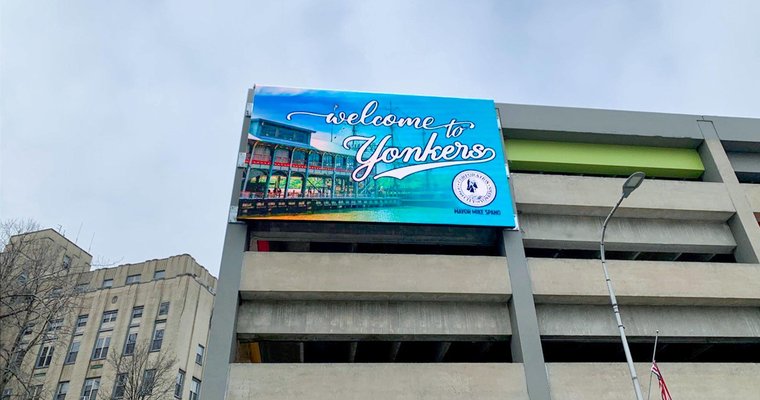
[ad_1]
How do you pick the right kiosk for your customers? This was the topic of a panel discussion, “Check in kiosks: finding the right solution for your venue,” delivered in the main conference hall at this year’s Self-Service Innovation Summit in Miami, Florida, hosted by Networld Media Group at the Loews Coral Gables hotels.
 Panelists Jeremy DuPont, Harikrishna Patel, Ray Bonneau and Roxann Favors ponder the factors in identifying the right self service option.
Panelists Jeremy DuPont, Harikrishna Patel, Ray Bonneau and Roxann Favors ponder the factors in identifying the right self service option.
How do you pick the right kiosk for your customers? What about mobile, and did you remember to make your solutions accessible?
The variables and a near galaxy of hardware and software options can be dizzying for any business operator when planning self-service solutions.
This was the topic of a panel discussion, “Check in kiosks: finding the right solution for your venue,” delivered in the main conference hall at this year’s Self-Service Innovation Summit in Miami, Florida, hosted by Networld Media Group at the Loews Coral Gables hotel.
Self-service is the future, from hotels to airports and beyond
 |
Panel moderator Jeremy DuPont, VP of product and marketing at Kiosk Information Systems, questions the panelists. Image: Willie Lawless/Networld Media Group. |
Self-service innovation is rapidly becoming an essential cornerstone for businesses of all types and sizes, from airports to hospitality, retail and beyond.
“We represent 60% of hotels in the nation,” said panelist Harikrishna Patel, board director, Asian American Hotel Owners Association and a hotel operator. “And right now, we’re in a post-COVID moment. Every single hotel in our association has a vacancy because of employment issues, and we are trying to utilize self-check-in kiosks to help with that.”
In self-service, necessity is the mother of invention, and Phoenix Sky Harbor International Airport was no exception, explained panelist Roxann Favors, assistant aviation director and chief revenue officer at Phoenix Sky Harbor International Airport.
“We’re the largest airport in the state of Arizona,” Favors said. “Last year we did a little over 43 million passengers and as of October, we’re at 41 million passengers,” she said. “We are a two-terminal airport with three runways with the distinction of being one of the busiest three runways in the United States. Our campus is only 3,400 acres so everything that we do, we have to maximize the space.”
The airport began using kiosks for passenger services, primarily with international passenger check-ins; with size restrictions, it was not possible for each airline to have their own booths and technology for this purpose, so kiosks were essential. Later, when modernizing Terminal Three, the airport moved its seven domestic carriers to “common use”; this was an adjustment for domestic passengers and airlines.
Other self-service kiosk uses at the airport include directories and maps for airport amenities and stores, including open/closed status information, along with the airport’s consolidated rental car center.
Define your goals
Step one is asking, what are your goals?
The top goal for hospitality and hotels, said panelist Ray Bonneau, vice president of client solutions at Virdee, a virtual receptions software solutions provider, is improving the guest experience and providing options on kiosk and mobile that allow guests to get to their room quickly, removing friction from that check-in process.
The other main goal is improving operations through automation, including time-consuming tasks like presenting terms and conditions and getting signatures or verifying ID’s. “Now we can start to automate and offload that,” said Bonneau, since a growing number of these tasks can all be easily and quickly done through self service. This is particularly helpful in a time of labor shortages and understaffing — hence, self-service is a win-win for operators and customers alike.
Patel concurred, offering the operator’s perspective. “Like Ray said, it’s convenience,” Patel said. “For many of you here, when you travel and check into hotels, you don’t want to stand there. You’ve been traveling all day… You’re tired and you want to get to your room and relax. So, kiosks provide one of the best ways to go about this, or even digital check-in with your phone.”
“As an airport operator, what we’re really looking for is that speed of service for the passenger,” Favors said.
Revenue and use statistics are vital to understand customer behavior and see which self-service tools are popular and which are not; this allows you to choose which services to keep, improve or cut. If there is friction in your solution, data will help you find and fix the problem.
Measure your success
You’ve got to observe which parts of your solution work well and are widely used, and which aren’t.
For example, if customers simply prefer using their own mobile device instead of a mostly-unused kiosk, you can remove or repurpose that kiosk and space, which helps cost, revenue and guest experience. This is especially important when space is at a premium in your operation. That’s why choosing your software and software partner is central, since good technology creates robust, usable data.
“We actually monitor the whole flow and can get pretty granular type metrics,” Bonneau said.
 |
The panel listens to airport self-service insights from Roxann Favors, assistant aviation director/chief revenue officer at Phoenix Sky Harbor International Airport. Image: Networld Media Group/Willie Lawless. |
Automation fuels the human side
Part of the beauty of automation is that, contrary to popular belief, automation actually liberates your operation and your workers to create an even warmer and more human-shaped experience for every guest by removing the time-consuming, repetitive types of tasks that historically have added so much friction to guest experiences, both for workers and for customers.
“A lot of the clients that we work with are interested in freeing up their human capital to provide more soft services,” said panel moderator Jeremy DuPont, VP of product and marketing at Kiosk Information Systems, a kiosk manufacturer. “In hospitality contexts, [examples like] welcoming the guests, trying to create that environment of relaxation and comfort and not necessarily the bureaucratic portion of checking into the hotel. Leaving that to the self-service function frees up some of the actual human resources to provide more soft services to guests.”
The effect isn’t limited to hotels, either.
“As an airport operator, it was really our airline partners that were on the forefront of that,” Favors said. “How best could they optimize their human capital? Isn’t an airport stressful enough? How can we lower that stress? The one area I can’t control is getting through the security checkpoint, but from there on, people will relax and get ready for the trip, whether it’s business or personal.”
Kiosks and mobile not competitors
 |
Harikrishna “HK” Patel, board director, Asian American Hotel Owners Association, ponders a panel question. Image: Willie Lawless/Networld Media Group. |
The question of whether or not mobile order-and-pay competes against kiosks naturally emerged during the discussion.
“We often say at Kiosk Information Systems, we’re not a competitor against mobile solutions but more supplementary, meaning that we can handle use cases that potentially can’t be handled from a mobile environment, whether that’s delivering actual physical media or doing credit card payments and those types of things in a more secure way,” Dupont said.
Bonneau concurred, noting that while mobile is key at Virpee in developing self-service, it’s not the only tool in the toolbox. “Kiosks still have a place. There’s always the issue of getting a key card to a guest,” Bonneau said. “Not all properties have mobile digital key support.”
Having mobile and kiosk options is part of a principle of systems redundancy that helps guest experiences across categories — that is, if one system breaks down or becomes unavailable, guests can use an alternative to get what they need quickly.
“Just from personal experience, last week I was at a resort, and the mobile key wouldn’t work,” Patel said. “I literally got stuck inside the elevator because my mobile key wouldn’t work. And I could not go up or down because there was no verification. So I had to call the hotel. They came out and opened it with a key. So in situations like that, you will need to have somebody at the hotel that can provide physical stuff.”
Using kiosks as supply centers and mobile storage units for items like towels, food, beverages and other supplies for guests is another powerful strategy, Patel added.
In a wide-ranging discussion that included audience questions, the panel shared additional stories and advice on self-service implementation, troubleshooting and best-practices.
Emerging tech trends
- Emerging tech and trends include robotic food delivery in airports and elsewhere, along with table bussing.
- The hospitality industry is adopting robotic systems as well, e.g., robots fulfilling requests for fresh towels.
- Artificial intelligence continues to expand, including ways to improve customer experience, revenue and personalization of guest experiences.
- In airports, self-service bag checks continue to grow, along with biometrics development.
- Eyes or fingers allow most international passengers to pass through security, Favors said, without historical friction and hassle related to ID verification.
- Cybersecurity, as always, is central to this development.
- Robotics can depend on space concerns; Favors noted that small and crowded airports like hers may not be able to support mobile robots currently, though she has seen the technology at a local university.
- Self-service technologies are changing labor, but mostly in ways that benefit businesses alongside workers and consumers, including:
- Helping with the massive post-pandemic labor shortage in various categories.
- Enhancing guest experience, particularly in saving time and reducing friction.
- Lowering costs and boosting ROI.
- Freeing up human workers for creative problem solving and customer-service focus.
Accessibility is central, and content is key
- All of this emerging technology helps fuel accessibility across virtually every business category.
- Phoenix Sky Harbor has partnered with Aira, which helps visually impaired passengers navigate airport spaces.
- Meeting ADA requirements in hotels and welcoming all ages and ability types is vital.
- You have to make your kiosks accessible, Patel noted, including for visually- or hearing impaired guests.
- Part of maintaining a variety of service options to create systems redundancy in the guest experience is that it makes your offerings more accessible to all patrons. “We need to make sure the kiosks are ready for them, because the last thing you want to have is a guest with a disability walk into your hotel and be unable to have a human help them — this can be very discouraging for a guest,” Patel said.
- “Content is key.”
- Don’t forget the power of advertising, informational, and other content in your self-service ecosystem, including kiosks.
3 rules for choosing self-service solutions
- Experience.
- Security.
- Convenience.
- “Just as if you’re hiring a human for your staffing, you want to look at experience,” Patel said. “When you want to select a kiosk system, what is their background? How old is the company? What have they done in the past? How are their experiences with other customers? How secure is the platform? How convenient is it?”
Daniel Brown is the editor of Digital Signage Today, a contributing editor for Automation & Self-Service, and an accomplished writer and multimedia content producer with extensive experience covering technology and business. His work has appeared in a range of business and technology publications, including interviews with eminent business leaders, inventors and technologists. He has written extensively on AI and the integration of technology and business strategy with empathy and the human touch. Brown is the author of two novels and a podcaster. His previous experience includes IT work at an Ivy League research institution, education and business consulting, and retail sales and management.
[ad_2]
Source link






